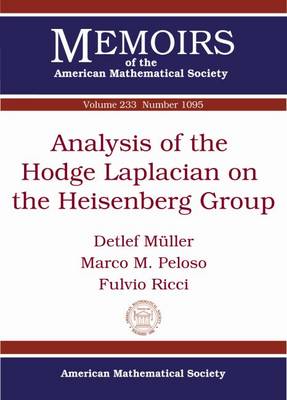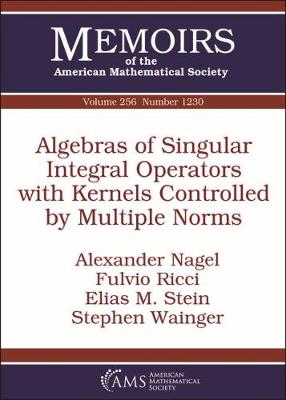Memoirs of the American Mathematical Society
2 total works
Analysis of the Hodge Laplacian on the Heisenberg Group
by Detlef Muller, Marco M. Peloso, and Fulvio Ricci
Published 30 January 2015
The authors consider the Hodge Laplacian on the Heisenberg group H n , endowed with a left-invariant and U(n) -invariant Riemannian metric. For 0 k 2n 1 , let k denote the Hodge Laplacian restricted to k -forms.
In this paper they address three main, related questions:
In this paper they address three main, related questions:
- (1) whether the L 2 and L p -Hodge decompositions, 1
- (2) whether the Riesz transforms d 12 k are L p -bounded, for 1 ;
- (3) how to prove a sharp Mihilin-Hoermander multiplier theorem for k , 0 k 2n 1 .
Algebras of Singular Integral Operators with Kernels Controlled by Multiple Norms
by Alexander Nagel, Fulvio Ricci, Elias M Stein, and Stephen Wainger
Published 30 October 2018
The authors study algebras of singular integral operators on $\mathbb R^n$ and nilpotent Lie groups that arise when considering the composition of Calderon-Zygmund operators with different homogeneities, such as operators occuring in sub-elliptic problems and those arising in elliptic problems. These algebras are characterized in a number of different but equivalent ways: in terms of kernel estimates and cancellation conditions, in terms of estimates of the symbol, and in terms of decompositions into dyadic sums of dilates of bump functions. The resulting operators are pseudo-local and bounded on $L^p$ for $1 \lt p \lt \infty $. While the usual class of Calderon-Zygmund operators is invariant under a one-parameter family of dilations, the operators studied here fall outside this class, and reflect a multi-parameter structure.

